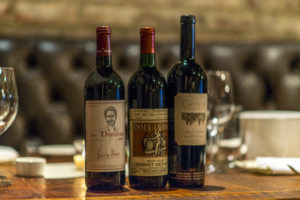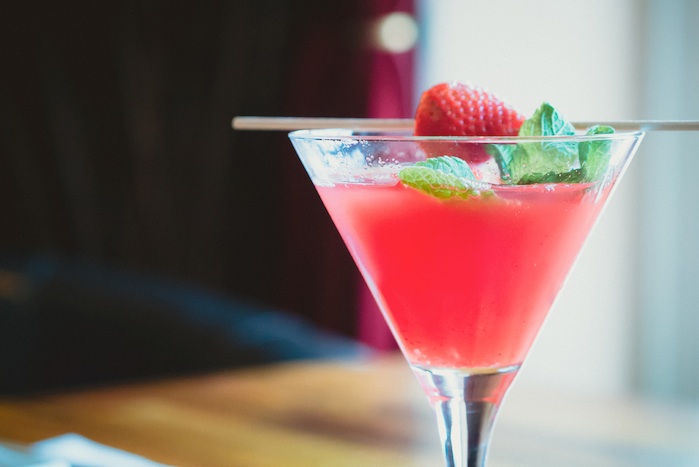Editor’s Note: How can retailers effectively stay on top of the many different alcohol trends in 2016? One way is by keeping a close eye on what’s emerging at on-premise accounts, where many alcohol trends start. For that reason we present a recent piece from our on-premise sister publication Cheers on 8 On-Premise Beverage Trends For 2017:
Our “trendologists” developed our annual preview of the hot trends and predictions based on client interactions, industry conversations, conferences and events; consumer and trader publications, observations and travel. We also consult our panel of industry experts for their insights and predictions.
And we conduct our own research by going out—a lot—to see what’s happening at restaurants, bars and hotels. Based on the intelligence we’ve collected, these are the beverage trends to watch for 2017.
1) Year-Round Rosé
Move over summer, rosé is here to stay! “Rosé is no longer just a spring/summer offering: It is being featured throughout the year as a sound wine for food pairing,” according to our expert Carolyn Wente, a fourth generation winegrower and CEO of Wente Vineyards.
“Rosé continued strong, double-digit category growth all year,” Wente says. “Both retail and restaurant lists have expanded their rosé offerings, and we think this is a trend that will continue and prove that the category is finally here to stay.”

2) Sour Beer Sizzles
Pucker up, buttercup! Keep your eye out for Flanders Red, Berliner Weisse, Gose—all types of sour brews that are taking the beer scene by storm.
According to food/lifestyle journal Lucky Peach, “most brewers have tried, with great success, to keep souring agents (a few certain kinds of microbes) out of their beer. But today sour-on-purpose beer is increasingly popular.”
Restaurants and bars are welcoming entire menu sections devoted to the super sour brew. We’re seeing this trend at Loma Brewing In Los Gatos, CA, which features a Berliner Weisse, fermented with both yeast and bacteria, which provides additional acidity and dryness.
3) Natural Wine’s Time To Shine
Here’s a trend we can naturally get behind! But what is natural wine anyway? It’s minimally processed, additive-free, and generally produced without adding or removing anything.
According to NPR, natural wine “can be darker than usual, a little fizzy, cloudy or with good-sized clumps of yeast floating about.” Aimed toward the health conscious, prepare yourself for an influx of this funky fine wine.
We’re seeing this trend at places such as The Ordinaire natural wine bar and shop in Oakland, CA, and The 4 Horsemen in New York.
4) Re-Imagining Cocktail Recipes
Instead of merely reintroducing old recipes or mixing drinks that look like science projects, bartenders are now taking classic cocktail concepts and essentially making them their own. The cocktails are recognizable, yet there is something significantly unique about them.
These bartenders are reinventing old recipes to showcase specific nuances, esters and textures that they feel best express their connection to the cocktail. Garnishes, presentation and extras can add pizzazz as well.
For example, San Francisco supper club Black Cat offers a $23 Martini (shown at top), made from either Blue gin or Axberg vodka and stirred with dry vermouth and orange bitters. The Martini comes with a sidecar, pickled veggies and two bleu cheese stuffed olives.
5) Wine Flights Fly High
While wine flights have been around for years, this trend will continue to be strong, particularly as guests continue to become more educated and more curious about wine. Focused wine flights are a great option for customers vs. deciding on just one glass of wine or committing to sharing an entire bottle.
Typically offered in 2-oz. pours of three different wines, the amount of wine is perfect for supplementing a meal or catching up with a friend. One glass usually isn’t enough, two glasses is sometimes too much… a wine flight is just right.
Flights allow the sommelier and staff to both introduce and educated their guests on what they consider some of the finest wines on the market. Guests can experience the wines in a casual yet highly informative format.
Wine flights allow staff to curate unique combinations based on almost anything, such as regions around the world, obscure grape varietals, and wine styles. One Market restaurant in San Francisco features some of the finest and most rare productions of wine from California and other regions with its “Flight of the Month” program. Wine director (and our expert) Tonya Pitts bases each wine flight off of several factors including the season, her wine expertise, and exciting new things that winemakers are doing with their production.

El Paseo, a restaurant in Mill Valley, CA, owned by Rock and Roll Hall of Famer Sammy Hagar, recently launched a “Secrets of the Old World” wine flight. Each week features a high-end flight of three different wines that showcase some of the most premium wine producers from France, Italy, Spain and other regions throughout Europe. This program offers guests a unique opportunity to taste both rare and old vintage wines that Hagar has collected over the years.
6) Sake Steps Up
Craft sake breweries and bars are opening all over the US, educating customers on the intricacies of the spirit. Coinciding with the popularity of Japanese cuisine, it’s no surprise sake is finally getting the love it deserves.
For instance, Sequoia Sake Co. in San Francisco is part of the new American micro-sake revolution; it specializes in three types of sake: genshu, nigori, and nama. The sake bar Decibel in New York stocks more than 100 of Japan’s finest sakes and also offers Japanese snacks and small plates.
7) Canned Wine Catching On
In recent years we’ve been seeing alternative packaging for wine on the rise, thanks to more casual consumption and a desire for recyclable and sustainable footprints. Several new wines offered in cans entered the market in the past year and are experiencing solid growth, according to our expert Carolyn Wente.
For instance, Union Wine Co. in Tualatin, OR, offers its Underwood wines in bottles as well as cans ($28 for a four-pack. Cans can be recycled infinitely with no loss of quality through a well-established and efficient process, and each can recycled substantially reduces the environmental footprint, according to the company. “Cans are ultra-efficient to transport, lightweight, unbreakable and provide superior product protection. We think those are all very good reasons to use them.”
Kegs were predicted to be the wave of the future for serving wine in restaurants, but adoption has been slow due to cost of installation and infrastructure for delivery with wholesalers. New distribution methods are afoot, so kegs may begin to gain traction with independent restaurants and chains.
8) Cocktail Consultants Break Out
First we just had a guy (or gal) behind the bar who made us a drink and tended the bar. Then we had mixologists, and our drinks took three hours to make. We even had a brief stint with bar chefs.
Now we’re back to bartenders, and this past year saw the rise of “the culinary consultant.” These cocktail geniuses are taking bar programs and training of bar staff to a whole new level.
For example, Julian Cox and Josh Goldman, partners in the Los Angeles-based Soigne Group, create award-winning and trendsetting craft cocktail, beer and wine programs across the country. And New York-based mixologist Brian Van Flandern, founder of bartender-training program Creative Cocktail Consultants, designs corporate craft cocktail programs and educates bartenders in hotels, restaurants and resorts throughout the world.
Food is no longer the main or only attraction; the cocktail menu is a big draw and has a point of view as strong as what’s coming out of the kitchen. Rock-star consultants are pushing the envelope and creating cocktail programs that stand out among the crowd.
Andrew Freeman is president Andrew Freeman & Co., a boutique hospitality- and restaurant-consulting firm based in San Francisco.




